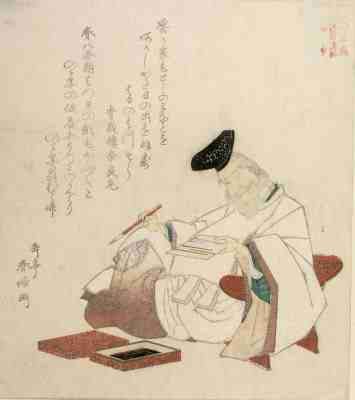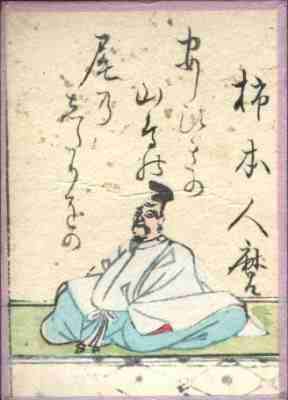Japanese Poetry by Kakinomoto no Hitomaro: Seventh and Early Eighth Century
Lee Jay Walker
Modern Tokyo Times
Kakinomoto no Hitomaro is a highly esteemed poet of the distant past in the land of the rising sun. Indeed, Hitomaro is deemed to be one of the Thirty-six Poetry Immortals based on his prominence in volumes 1 and 2 of the highly acclaimed Man’yōshū. Therefore, this waka poet who belongs to the late period of Asuka remains revered in modern Japan in the area of poetry and high culture.
The notoriety of Hitomaro especially applies to his deep thinking and elegant long poems where you can feel his poetic soul. Despite the natural appeal of his long poems called chōka, Hitomaro equally focused on short poems called tanka.
Little is really known about his life and doubts persist if his notoriety began under Emperor Temmu (631-686) or Emperor Tenji (626-672). In the past, it was widely believed that his career began under Emperor Temmu. Yet, the notable scholar Kitayama Shigeo points in the direction of Emperor Tenji. This is based on a pair of composed poems alluding to mourning the sad loss of a lady who belongs to the court of Emperor Tenji. Therefore, differences of historical interpretation remain in modern times and this highlights the limited nature about what is really known about Hitomaro.
It is believed that Hitomaro died in the early eighth century so much of his poetry relates to the seventh century. Equally, it appears that he served several princes based on the poetry he leaves behind.
In part of the poem titled On the Death of his Wife he writes forlornly:
Alas,
while our ways of love we still kept secret,
secret as pool sheltered in warm rocks,
my world a sunless waste became,
and clouds snuffed out the moon that lit my heaven.
For she, my love – as graceful as deep kelp fronds-
has faded from my days like autumn’s glory.
Such is the news the running messenger brings.
Like the clang of the bow-strings on
a whitewood bow they hit my ear,
but I find no word to answer
or means to offer solace,
any words are aching pain.

Hitomaro concludes this poem of sorrow by saying:
In autumn’s fall of scarlet forest leaves
I see the message coming for me
and think of one day of love
that never more shall be.
The life and death of Hitomaro are connected to two Shinto shrines in the province of Iwami (modern-day Shimane Prefecture). While a special Shinto shrine in Hyogo Prefecture dedicates itself to Hitomaro. Overall, this article is aimed at shedding a limited light about this acclaimed poet of old Japan.
DONATIONS to SUPPORT MODERN TOKYO TIMES – please pay PayPal and DONATE to sawakoart@gmail.com
http://moderntokyotimes.com Modern Tokyo Times – International News and Japan News
http://sawandjay.com Modern Tokyo Times – Fashion
https://moderntokyonews.com Modern Tokyo News – Tokyo News and International News
http://global-security-news.com Global Security News – Geopolitics and Terrorism
PLEASE JOIN ON TWITTER
https://twitter.com/MTT_News Modern Tokyo Times
PLEASE JOIN ON FACEBOOK
https://www.facebook.com/moderntokyotimes
Some Japanese art and cultural articles by Modern Tokyo Times are republished based on our growing international readership – and the need to highlight unique traits about Japan.


